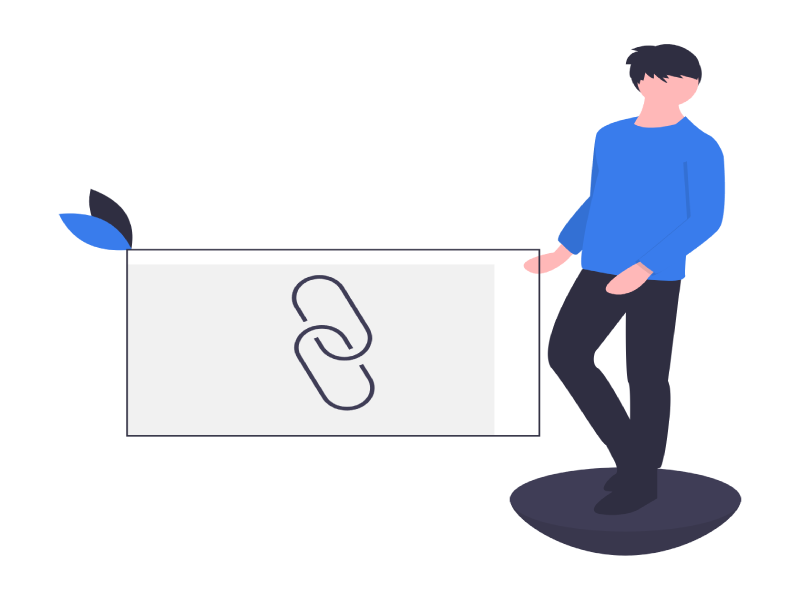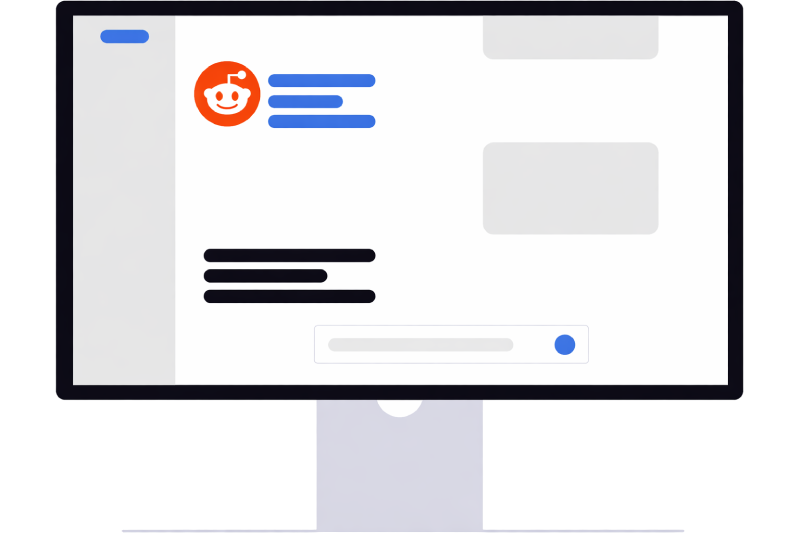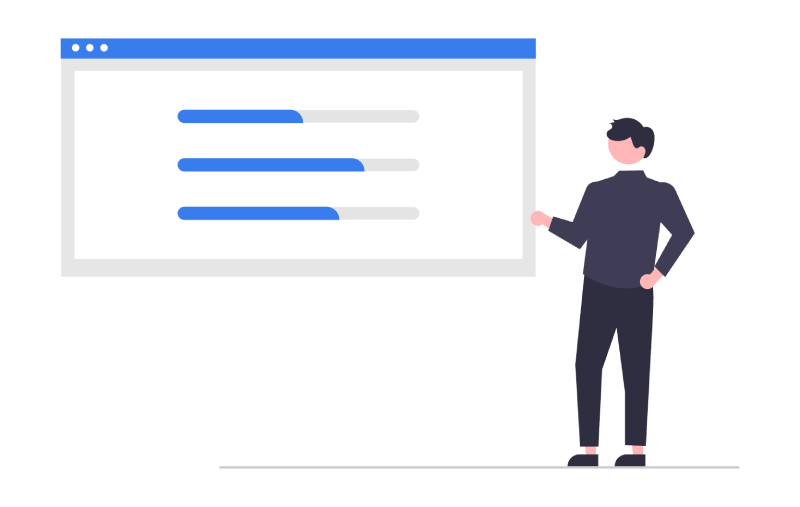Why Link Diversity Still Matters in 2025
In the age of AI-assisted search, link diversity has moved from best practice to baseline. With Google tightening its grip on manipulative patterns — and generative engines like ChatGPT, Gemini, and Perplexity reshaping how content is surfaced — building a well-balanced backlink profile is now one of the most durable strategies for long-term SEO success.
Google still lists backlinks among the top three ranking factors. But it’s not just about how many links you have — it’s about what kind, from where, and how they’re distributed. Sites with varied backlink sources don’t just rank better — they tend to stay ranked, even through major updates. They also earn more GEO-native visibility: presence in AI answers, summaries, and contextual snippets that now dominate the top of the SERP.
Why does that matter? Because today’s visibility isn’t limited to blue links. In 2025, the search experience is fragmenting — users are just as likely to find answers inside an AI box as on your website. And large language models don’t just parse PageRank — they rely on diversity, consensus, and contextual authority to decide what to surface. That’s where a strategically layered backlink profile becomes essential.
This philosophy echoes what we now call Adaptive Backlinking — a strategy built to evolve alongside algorithms, user behavior, and platform policy shifts. If Reddit tightens outbound linking, or Google devalues low-effort guest posts again, brands with multidimensional link footprints won’t feel the hit. They’ve already spread their trust signals across forums, curated lists, local citations, Q&A threads, and branded mentions.
A 2025 study by Loopex Digital found that websites with at least five distinct link types (editorial, citation, guest post, forum, roundup) saw 41% more stable rankings after the March Core Update, compared to sites dependent on a single tactic. That’s not theory — that’s insulation..
To illustrate the varying strategic value of different link types, consider this:
| Link Type | SEO Value | LLM / GEO Value | Notes |
| Editorial | ⭐⭐⭐⭐⭐ | ⭐⭐⭐⭐ | Most natural, high trust and topical context |
| Guest Post | ⭐⭐⭐ | ⭐⭐⭐ | Only valuable if relevant, non-scaled, and unique |
| Citations / NAP | ⭐⭐ | ⭐⭐ | Helps with local SEO; limited AI citation impact |
| Reddit / Quora | ⭐⭐⭐ | ⭐⭐⭐⭐ | Triggers Reddit Citation Loops, Quora-Trigger Loop |
| Forums / UGC | ⭐ | ⭐⭐ | Useful for diversity, not authority |
| HARO / Press | ⭐⭐⭐⭐ | ⭐⭐⭐⭐⭐ | Builds LLM Confidence Bias, often quoted in SGE |
💡 Insight: The more formats you appear in, the more LLMs trust you by default. Link diversity isn’t about quantity — it’s about range and context.
When links come from different ecosystems — think industry publications, Q&A forums, podcasts, local directories — they form Echo Backlinks. These multiply your visibility across AI surfaces and traditional SERPs alike.
In short: link diversity isn’t a vanity metric. It’s your moat.
What Makes a Link Profile Diverse?
A diverse link profile is not just about where your links come from — it’s about how they function across the ecosystem of both search engines and generative models.
In 2025, Google’s ranking systems and large language models like Gemini and ChatGPT are more sensitive than ever to patterns, repetition, and manipulation. That’s why diversification across link type, source, and intent is critical — both for resilience against updates and for boosting your Generative Link Presence.
So, what exactly constitutes a “diverse” profile?
| Element | Strategic Value |
|---|---|
| Editorial Links | High trust, evergreen |
| Guest Posts | Brand positioning, SEO lift |
| Citations & Directories | Local trust & NAP authority |
| Reddit / Quora Mentions | Boosts LLM signals |
| Forum Threads & Niche Blogs | Adds diversity, relevance |
| Tier-2 Ecosystem Mentions | Creates Echo Backlinks |
| Branded Anchor Usage | Safe, supports recognition |
| LLM-Optimized Anchors | Triggers AI inclusion |
| Wide Referring Domain Spread | Improves Answer Equity |
| Clustered Thematic Linking | Builds Topic Authority |
1. Link Types
You need a variety of link structures — including editorial mentions, guest posts, citations, press links, Q&A threads, and niche directories. This multi-source footprint helps build LLM Confidence Bias, where models are subtly biased in your favor due to consistent, reputable mentions.
| Link Type | Example Channel |
| Editorial | Resource-based link building |
| Guest Contribution | Outreach campaigns |
| Forum-based | Quora/Reddit Marketing |
| Citation/Directory | Local SEO listings |
| Foundation Links | Entry-level authority links |
2. Domain Diversity
Links from 200 different domains are more valuable than 2,000 links from one. This expands your Answer Equity — the share of AI answers that include or cite your brand across different web sources.
Use tools like Ahrefs and Google Search Console to monitor referring domain growth. Platforms like Crowdo offer curated outreach to help expand domain-level authority.
3. Anchor Text Distribution
Modern link profiles avoid over-optimization. Aim for a mix of:
- Branded anchors (“Crowdo SEO”)
- Generic (“this service”, “click here”)
- Partial-match (“SEO services for startups”)
- Naked URLs
- Contextual phrases optimized with LLM Anchor Optimization
This blend signals natural growth and makes your content more accessible to generative engines looking for snippet-worthy phrasing.
4. Topical Clustering
Don’t scatter your links randomly. Build them around specific content clusters. This helps create Generative Keyword Layering — an SEO strategy that targets not only exact keywords but also long-tail and thematic queries used in AI prompts.
Expert Insight
“If your link profile doesn’t mirror the way humans naturally cite useful sources online, you’re not building authority — you’re building risk.”
— Lily Ray, SEO Director, Amsive Digital
Final Note
A link profile that appears across content types, domains, contexts, and formats trains both Google and LLMs to treat you as a default source. That’s how you earn GEO-native visibility — not just rankings.
Avoiding Over-Optimization: Anchor Text Benchmarks
Anchor text remains one of the most powerful — and risky — elements in a link profile. While it’s critical for reinforcing topical relevance, over-optimized anchors are a red flag for both Google and large language models. In 2025, getting it wrong doesn’t just cost you rankings — it costs you visibility in generative answers.
Modern systems are increasingly sensitive to patterns that feel artificially optimized. That means keyword-stuffed anchors, repetition across placements, and aggressive exact-match usage no longer cut it. Instead, a smart anchor strategy is built around diversity, clarity, and semantic alignment — especially for LLM Anchor Optimization.
The current best practice is to aim for a natural-looking anchor distribution:
- Branded anchors should make up roughly 50% of your profile. These are the safest and most scalable anchors, and they reinforce brand identity while building LLM Confidence Bias.
- Generic anchors, like “click here” or “read this post,” account for about 20%. These simulate organic linking behavior and contribute to GEO-native visibility by making your brand part of everyday language.
- Partial-match anchors, which blend keywords into natural phrasing (“SEO software comparison”), work best in Context Flow Backlinks and should be around 15%.
- Exact-match anchors (e.g. “buy backlinks”) are high-risk in large numbers. Keep them under 10%, and only use them where highly justified.
- Finally, naked URLs should round out about 5% of your profile, especially across directories, citations, or Reddit-style discussions — helping with Generative Link Presence.
These numbers aren’t hard rules, but clear signals. What matters more than exact percentages is how your anchors sound. Would a real person write this? Would an AI quote it? If not, it’s probably hurting you.
Smart SEOs now write anchors that look like sentences, not keywords. Instead of “cheap SEO service,” say:
“Here’s what to look for when choosing a cost-effective SEO provider.”
That kind of phrasing doesn’t just survive the algorithm — it gets featured in answers.
If you’re still using anchors like it’s 2013, you’re already falling behind.
.
Types of Links That Actually Matter
Not all backlinks are created equal. Some pass trust. Some pass authority. Others pass nothing — or worse, poison your domain with algorithmic baggage.
In 2025, the links that matter most are those that serve both traditional SEO metrics (indexing, DR, crawl depth) and Generative Engine Optimization goals: inclusion, citation, and semantic clarity. If a link wouldn’t make sense in an AI-generated answer, it may not be worth pursuing.
1. Editorial Links
Naturally earned editorial mentions remain essential — whether from industry blogs or regional news. For local campaigns, editorial links combined with consistent local citations can strengthen both traditional rankings and Local LLM Signals.
2. Forum and Q&A Mentions
Mentions on Reddit or Quora can trigger AI inclusion loops. Services that specialize in community-driven link placement have seen increased demand as marketers focus on visibility across generative surfaces, not just the SERP.
3. Guest Posts and Contextual Outreach
Outreach-based link building is still one of the most effective methods when done properly — meaning: manual, relevant, and placed within trusted editorial environments. Today, it’s less about DR chasing and more about format, narrative, and LLM extractability. If your content can’t be cleanly quoted, it won’t make it into the AI layer.
SEO teams often turn to manual outreach services to secure placements that align with both user intent and generative compatibility — especially across B2B and SaaS industries.
4. Foundational Links for Indexation & Trust
Before building topical authority, you need a solid base. Foundation link packages provide that baseline — citations, profiles, directories, and starter mentions. These links may not have high DR individually, but they help establish presence, diversify anchor usage, and support Backlink Sculpting efforts.
In 2025, foundational signals are still a must for domains just starting out — especially those targeting GEO Diversity Boost through multilingual citations or niche forums.
5. Review Citations and Unstructured Brand Mentions
Google and LLMs alike draw heavily from unstructured sources — like review platforms, testimonials, and embedded quotes. Proactive review management can boost LLM Confidence Bias, especially in YMYL niches.
Follow vs. Nofollow: It’s About Balance
In the early days of SEO, the “nofollow” attribute was considered a dead end — a way to block link equity and signal irrelevance. But in 2025, the picture is far more nuanced. Nofollow links are no longer ignored by Google or large language models. They’re evaluated as hints, not rules, and they play an important role in building a diverse, resilient, and AI-visible backlink profile.
Why You Need Both
Links without the rel=”follow” attribute can still:
- Drive referral traffic
- Build brand awareness
- Appear in datasets crawled by LLMs (e.g. Reddit, Quora, forums)
- Contribute to Mention-first marketing
- Support GEO-native visibility via local or niche clusters
On the flip side, over-relying on only dofollow links — especially those from clearly commercial placements — can signal manipulation. That’s why a natural mix matters.
For most modern SEO campaigns, the ideal distribution sits at:
- 70–85% dofollow links (editorial, outreach, citations)
- 15–30% nofollow links (social, UGC, mentions in forums or comments)
This ratio supports both PageRank flow and LLM Oriented Backlinking — a newer tactic where even non-equity-passing links serve as training material for AI engines.
Pro Tip: Tools like Ahrefs and Google Search Console don’t fully show how often nofollow links are reused in generative summaries — but Perplexity and You.com often do.
Where Nofollow Links Still Move the Needle
- Q&A threads on Reddit or Quora
While these links don’t pass equity, they do influence Prompt-Based SERP Capture — especially when threads rank or get cited in AI snippets. Services focused on Quora/Reddit promotion can be extremely effective for visibility rather than rank. - Local directories and review platforms
Sites like Yelp or TripAdvisor use nofollow by default, but their mentions still support Local LLM Signals and LLM Confidence Bias. In regulated or local industries, review-focused strategies can outweigh traditional link building. - Tier-2 blog comments, forums, niche social platforms
While easily dismissed in legacy SEO models, these often drive second-hand exposure — leading to Echo Backlinks as your content spreads.
What to Watch for in 2025
- Misleading dofollow/nofollow ratios — over 95% dofollow often triggers audits
- Buying links from sites with forced follow tags — these leave obvious footprints
- Forgetting that LLMs don’t care about rel attributes — they just crawl what they can parse
Nofollow isn’t a penalty — it’s a signal. And in many cases, it’s the signal that gets your brand into the dataset.
Scaling Link Acquisition in 2025
1. Leverage Original Content Marketing
Data-driven or interactive content is still the most scalable link asset.
Winning formats:
- Studies: “We analyzed 1M AI-generated snippets…”
- Tools: ROI calculators, audit graders
- 3,000+ word explainers with rich media
According to Loopex Digital, content-led campaigns generated 40.7% of total organic backlinks in 2024–2025.
2. Use HARO, Terkel & Featured Platforms
HARO and Terkel still deliver journalist-driven editorial mentions.
Tips:
- Respond to 3–5 pitches daily
- Stay in your niche
- Don’t pitch fluff—use real quotes, stats, or opinion
High-authority sites (Forbes, Inc, Fast Company) are still accessible with the right quote.
3. Pursue Internal Linking (Seriously)
Internal links support crawlability and help spread link equity.
Audit your site quarterly using:
- Screaming Frog (or Sitebulb)
- LinkWhisper
- Google Search Console
Optimize anchor text, avoid dead-end pages, and elevate hidden assets.
Tools to Monitor & Fix Link Health
| Task | Recommended Tool |
| Anchor text audit | Ahrefs, Majestic |
| Toxic link detection | Semrush, Link Detox, GSC |
| Inclusion in AI-generated SERPs | Glasp, ChatGPT Browsing, Perplexity |
| Monitoring backlink trends | Ahrefs Backlink Calendar |
| Internal link audits | Screaming Frog, LinkWhisper |
Penalties & Real-World Link Warnings
In 2024, multiple SaaS firms faced significant drops due to link manipulation. One startup bought 100+ PBN-style guest posts via a cheap vendor. Result?
- Traffic dropped 70%
- GSC issued manual action
- Recovery took 6+ months after disavow + new PR strategy
Takeaway? Never scale with shortcuts. Today’s links are tomorrow’s liabilities.
GEO Factor: Why AI Is Reshaping Link Value
With Google’s AI Overviews and ChatGPT’s web browsing, search engines no longer just crawl—they synthesize. And that means they prioritize brands mentioned across trusted, consistent surfaces.
LLM Oriented Backlinking is emerging as the new frontier—placing backlinks where AI models are most likely to train, not just crawl.
Where to focus:
- Quora + Reddit
- Wikipedia
- YouTube transcripts
- Blog comments (when meaningful)
If you’re not being referenced, you’re not being retrieved by generative engines.
Final Checklist: Building a Resilient Link Profile
| Task | Frequency |
| Audit anchor text for over-optimization | Quarterly |
| Track inclusion across AI tools (ChatGPT, Gemini, Perplexity) | Monthly |
| Pitch content to roundups + HARO/Terkel | Weekly |
| Diversify new link targets (by type, DR, geography) | Ongoing |
| Monitor link gains/losses and reactivate old wins | Bi-weekly |
Conclusion: Think Long-Term, Think Organic
The rules of the game are changing. Traditional SEO still matters—but it’s no longer enough. You need a link profile that’s not just strong, but adaptive. That means:
- Investing in Generative Link Presence
- Diversifying anchor text and link type
- Tracking AI inclusion alongside SERP rankings
The SEOs who win in 2025 won’t just build links—they’ll build systems of trust, feeding both search engines and large language models with the right signals.
Optimize for the click. Optimize for the quote. Optimize for the future.







